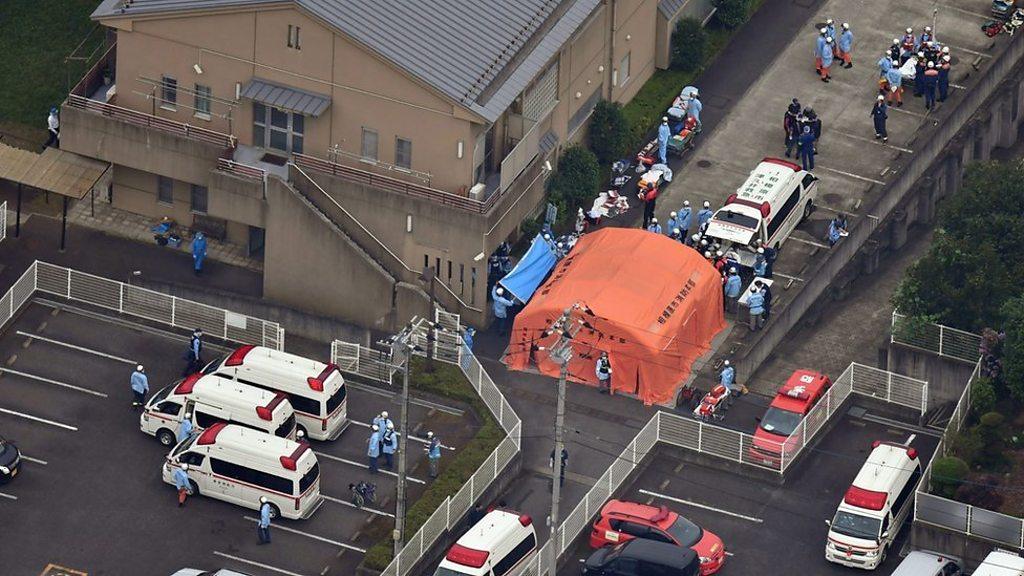Japan knife attack: 19 killed at care centre in Sagamihara
- Published
Japan knife attack: Aerial shots show emergency crews at scene
Nineteen residents have been killed in a knife attack at a care centre for people with mental disabilities in the Japanese city of Sagamihara.
Such attacks are extremely rare in Japan - the incident is the worst mass killing in decades.
Police have arrested a man who worked at the centre until February, and who turned himself into police after the attack.
He reportedly said he wanted people with disabilities to "disappear".
The brutal killings have shocked Japan, one of the safest countries in the world.
Who was Japanese knife attacker?
"The lives of many innocent people were taken away and I am greatly shocked. We will make every effort to discover the facts and prevent a reoccurrence," Prime Minister Shinzo Abe said.
Letter to politicians
The suspect has been named as 26-year-old Satoshi Uematsu.
He sent letters to politicians in February in which he threatened to kill hundreds of disabled people during a night shift, Kyodo news agency reports.
"My goal is a world in which the severely disabled can be euthanised, with their guardians' consent, if they are unable to live at home and be active in society," Uematsu wrote in a letter to the speaker of the lower house of parliament, obtained by Kyodo.
He was kept in hospital for almost two weeks before being released.
"You could say there were warning signs, but it's difficult to say if this could have been prevented," Kanagawa prefecture governor Yuji Koroiwa said.
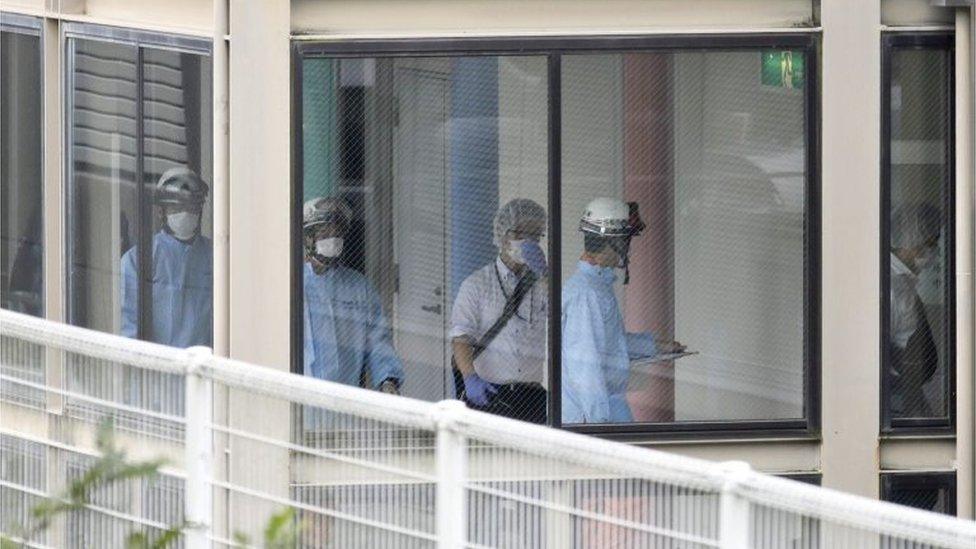
The brutal killings have shocked Japan
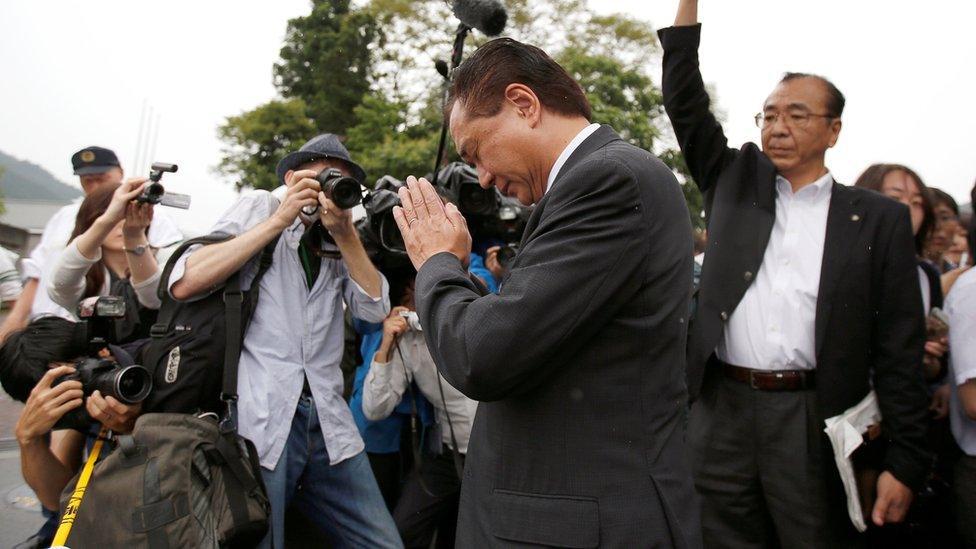
Kanagawa governor Yuji Koroiwa prays for victims of the attack
How the attack unfolded
Uematsu drove to the Tsukui Yamayuri-en care facility, located about 50km (31 miles) from Tokyo, in the early hours of the morning, armed with several knives.
He entered one of the buildings by breaking a window at 02:10 local time (17:10 GMT), a prefectural health official said, and began attacking sleeping residents one by one in their rooms.
Staff called police around 20 minutes later to report what was happening.
The stabbing rampage lasted around 40 minute across two buildings, the Associated Press news agency reports. Uematsu's 19 victims were aged between 19 and 70, Kyodo said, citing the Sagamihara City fire department.
Another 25 people were wounded, 20 seriously. Both men and women were reported to be among the dead.
Soon after the attack, Uematsu turned himself in at the Tsukui police station and reportedly admitted the attack, appearing to have driven himself there.
Pictures have emerged of the steering wheel of his car, stained with blood.
"When Uematsu turned himself in, he was found carrying kitchen knives and other types of knives stained with blood," a Kanagawa official told reporters.
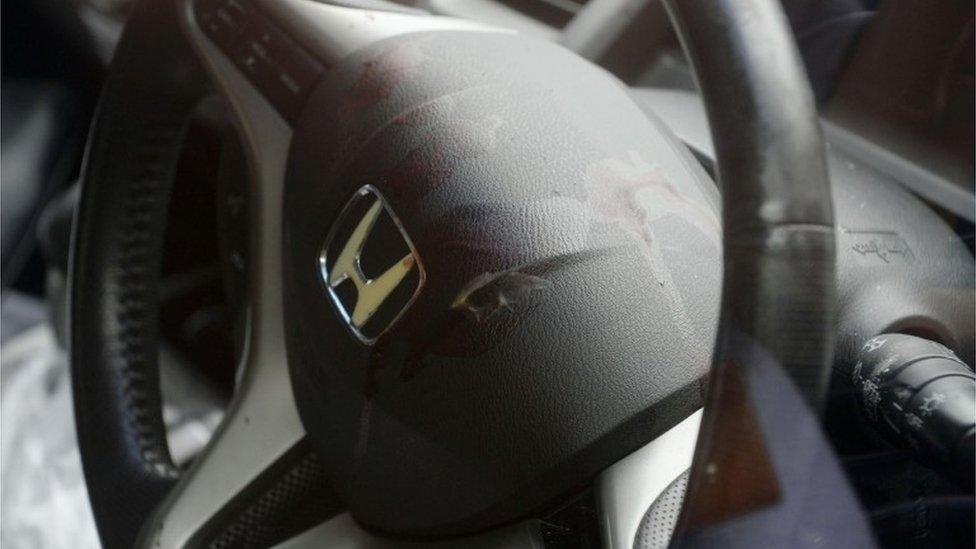
Pictures showed the steering wheel of the attacker's car stained with blood
A neighbour described Uematsu as polite and pleasant.
"We didn't know the darkness of his heart," Akihiro Hasegawa, 73, told Reuters.
The facility, set in extensive grounds, had about 150 residents at the time of the attack, according to local officials. Nine staff members were on duty at the time.
One doctor told NHK: "The patients are very shocked and they cannot speak now."
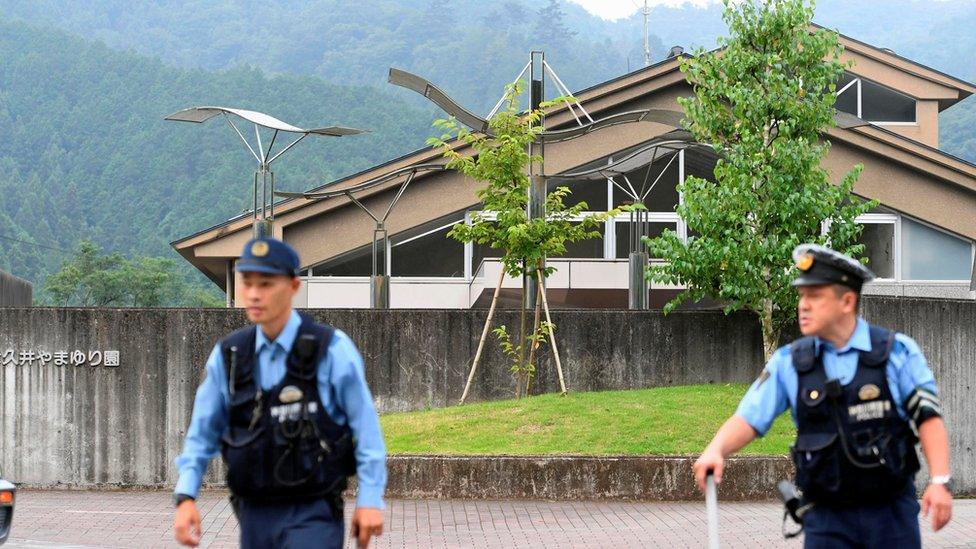
Police were called to the Tsukui Yamayuri Garden facility in Sagamihara
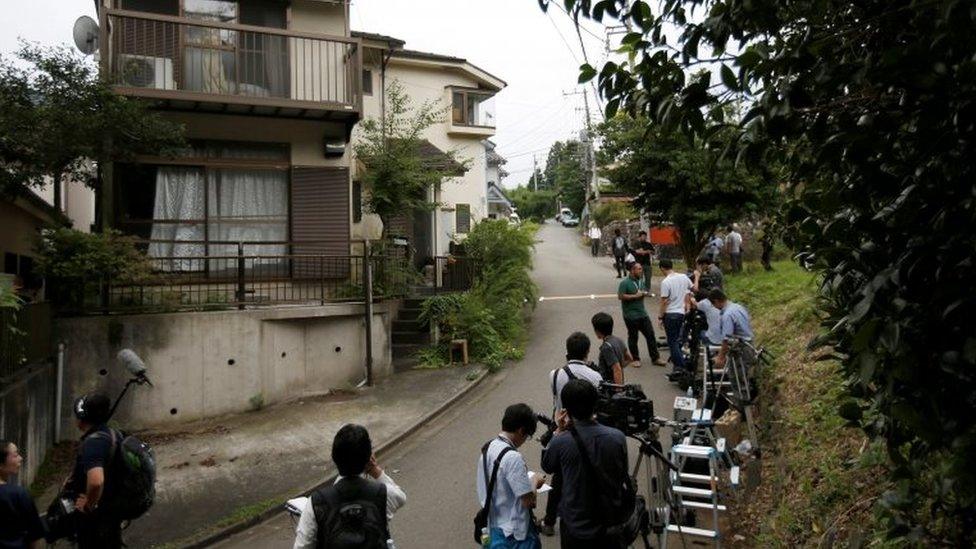
Reporters gathered outside the home of the suspect, which is not far from the care home
One woman who said she used to work at Tsukui Yamayuri-en told local media: "They are truly innocent people. What did they do?"
Officials have ruled out any link to terrorism.
Mass killings are extremely rare in Japan, in part because strict gun control laws means almost no-one has access to a firearm.
8 June 2008 - a man drove a truck into a packed shopping district at Akihabara in Tokyo, before climbing out and randomly stabbing people. Seven people died.
8 June 2001 - man with a history of mental illness stabbed eight children to death at an Osaka primary school in 2001.
20 March 1995 - 13 people die and thousands are made ill when members of a doomsday cult release sarin gas in the Tokyo subway.


Are you in the Japanese city of Sagamihara? Have you been affected by this incident? You can share your experiences by emailing haveyoursay@bbc.co.uk, external.
If you are available to talk to a BBC journalist, please include a telephone number.
Tweet us at @BBC_HaveYourSay, external or text +44 7624 800 100.
Or WhatsApp us on +44 7525 900971.
Read our terms and conditions.
- Published26 July 2016
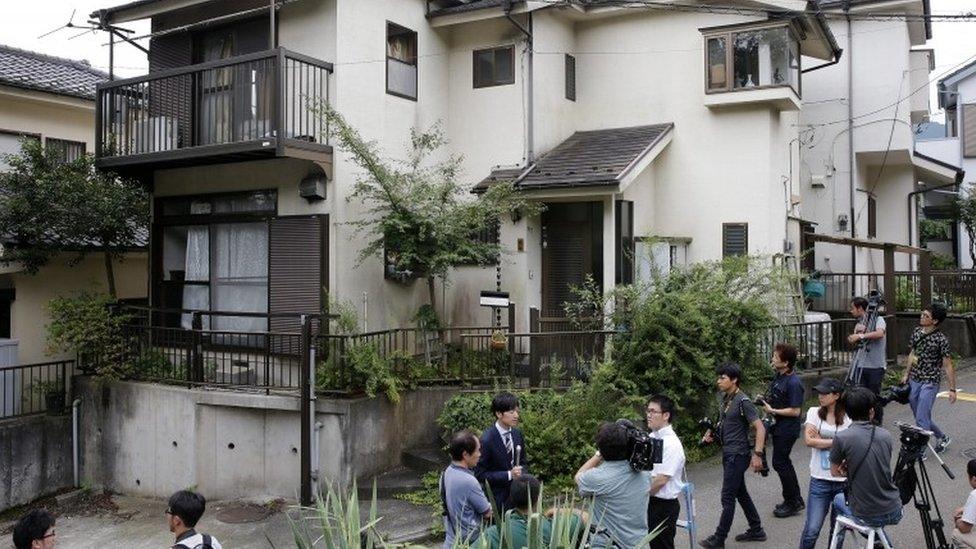
- Published26 July 2016
